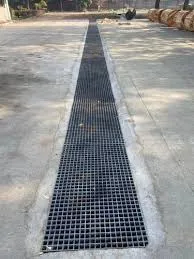
-
 Afrikaans
Afrikaans -
 Albanian
Albanian -
 Amharic
Amharic -
 Arabic
Arabic -
 Armenian
Armenian -
 Azerbaijani
Azerbaijani -
 Basque
Basque -
 Belarusian
Belarusian -
 Bengali
Bengali -
 Bosnian
Bosnian -
 Bulgarian
Bulgarian -
 Catalan
Catalan -
 Cebuano
Cebuano -
 China
China -
 China (Taiwan)
China (Taiwan) -
 Corsican
Corsican -
 Croatian
Croatian -
 Czech
Czech -
 Danish
Danish -
 Dutch
Dutch -
 English
English -
 Esperanto
Esperanto -
 Estonian
Estonian -
 Finnish
Finnish -
 French
French -
 Frisian
Frisian -
 Galician
Galician -
 Georgian
Georgian -
 German
German -
 Greek
Greek -
 Gujarati
Gujarati -
 Haitian Creole
Haitian Creole -
 hausa
hausa -
 hawaiian
hawaiian -
 Hebrew
Hebrew -
 Hindi
Hindi -
 Miao
Miao -
 Hungarian
Hungarian -
 Icelandic
Icelandic -
 igbo
igbo -
 Indonesian
Indonesian -
 irish
irish -
 Italian
Italian -
 Japanese
Japanese -
 Javanese
Javanese -
 Kannada
Kannada -
 kazakh
kazakh -
 Khmer
Khmer -
 Rwandese
Rwandese -
 Korean
Korean -
 Kurdish
Kurdish -
 Kyrgyz
Kyrgyz -
 Lao
Lao -
 Latin
Latin -
 Latvian
Latvian -
 Lithuanian
Lithuanian -
 Luxembourgish
Luxembourgish -
 Macedonian
Macedonian -
 Malgashi
Malgashi -
 Malay
Malay -
 Malayalam
Malayalam -
 Maltese
Maltese -
 Maori
Maori -
 Marathi
Marathi -
 Mongolian
Mongolian -
 Myanmar
Myanmar -
 Nepali
Nepali -
 Norwegian
Norwegian -
 Norwegian
Norwegian -
 Occitan
Occitan -
 Pashto
Pashto -
 Persian
Persian -
 Polish
Polish -
 Portuguese
Portuguese -
 Punjabi
Punjabi -
 Romanian
Romanian -
 Russian
Russian -
 Samoan
Samoan -
 Scottish Gaelic
Scottish Gaelic -
 Serbian
Serbian -
 Sesotho
Sesotho -
 Shona
Shona -
 Sindhi
Sindhi -
 Sinhala
Sinhala -
 Slovak
Slovak -
 Slovenian
Slovenian -
 Somali
Somali -
 Spanish
Spanish -
 Sundanese
Sundanese -
 Swahili
Swahili -
 Swedish
Swedish -
 Tagalog
Tagalog -
 Tajik
Tajik -
 Tamil
Tamil -
 Tatar
Tatar -
 Telugu
Telugu -
 Thai
Thai -
 Turkish
Turkish -
 Turkmen
Turkmen -
 Ukrainian
Ukrainian -
 Urdu
Urdu -
 Uighur
Uighur -
 Uzbek
Uzbek -
 Vietnamese
Vietnamese -
 Welsh
Welsh -
 Bantu
Bantu -
 Yiddish
Yiddish -
 Yoruba
Yoruba -
 Zulu
Zulu
frp chimney construction and installation for industrial and
FRP Chimney Construction and Installation for Industrial Applications
In industrial settings, the construction and installation of chimneys are crucial for ensuring effective ventilation and the safe release of gases produced during manufacturing processes. Traditional materials like steel and concrete have long been used; however, the emergence of Fiber Reinforced Polymer (FRP) chimneys has revolutionized this aspect of industrial design. FRP chimneys offer several advantages, including durability, corrosion resistance, and reduced weight, making them a compelling choice for modern industrial applications.
Advantages of FRP Chimneys
One of the primary benefits of FRP chimneys is their high corrosion resistance. Industries such as petrochemical, wastewater treatment, and pulp and paper are often exposed to harsh environments that can quickly degrade conventional materials. FRP, being a composite material made of polymer matrix reinforced with fibers, is inherently resistant to many chemicals and environmental factors. This resistance translates into a longer lifespan and reduced maintenance costs, ultimately providing a more cost-effective solution over time.
Another significant advantage is the lightweight nature of FRP. This characteristic simplifies both the construction and installation processes, allowing for reduced structural support requirements. A lighter chimney structure can also lead to lower foundation costs and faster installation timelines. Additionally, because FRP can be prefabricated off-site, it allows for quicker assembly on-site, minimizing disruptions to ongoing operations.
Construction Process
The construction of FRP chimneys requires specific expertise to ensure optimal performance. The composite materials are typically manufactured through processes like pultrusion or filament winding, which help create uniform strength and durability throughout the chimney structure. The selection of the resin and the type of reinforcing fibers (such as glass or carbon fibers) will depend on the application and environmental conditions the chimney will face.
frp chimney construction and installation for industrial and

Once the chimney components are fabricated, they are transported to the installation site. Installation usually involves assembling the prefabricated sections, which can be done using mechanical fasteners, adhesives, or a combination of both. Careful attention is required during installation to avoid damage and ensure that the chimney is properly aligned for optimal airflow.
Installation Considerations
Safety is paramount during the installation phase. Given that chimneys are often situated at significant heights, proper scaffolding, fall protection systems, and rigorous safety protocols must be in place. Furthermore, local building codes and regulations should be thoroughly reviewed before construction begins. Compliance with these regulations not only ensures the safety of workers but also guarantees the chimney meets necessary environmental standards for air quality and emissions.
To enhance the efficiency of FRP chimneys, various design features can be integrated. For instance, incorporating insulation can help maintain temperature levels inside the chimney, which is crucial for managing the emissions from industrial processes. Other features might include specialized liners to further enhance corrosion resistance or aerodynamic designs to promote better airflow.
Conclusion
In summary, the construction and installation of FRP chimneys in industrial settings offer numerous advantages over traditional materials. Their high corrosion resistance, lightweight nature, and reduced overall costs make them an attractive option for many industries. As manufacturers continue to seek innovative solutions to meet environmental standards and operational efficiency, FRP chimneys are likely to play an increasingly vital role in industrial infrastructure. With proper planning, design, and installation, FRP chimneys can provide a durable and reliable solution for effective gas management in industrial applications, ensuring both safety and compliance with environmental regulations.
Latest news
-
Exploring the Benefits of Top Hammer Drifter Rods for Enhanced Drilling PerformanceNewsJun.10,2025
-
High-Precision Fiberglass Winding Machine for GRP/FRP Pipe Production – Reliable & Efficient SolutionsNewsJun.10,2025
-
FRP Pipes & Fittings for Shipbuilding - Corrosion-Resistant & LightweightNewsJun.09,2025
-
Premium FRP Flooring Solutions Durable & Slip-ResistantNewsJun.09,2025
-
Premium Fiberglass Rectangular Tanks Durable & Lightweight SolutionNewsJun.09,2025
-
Tapered Drill String Design Guide Durable Performance & UsesNewsJun.09,2025









